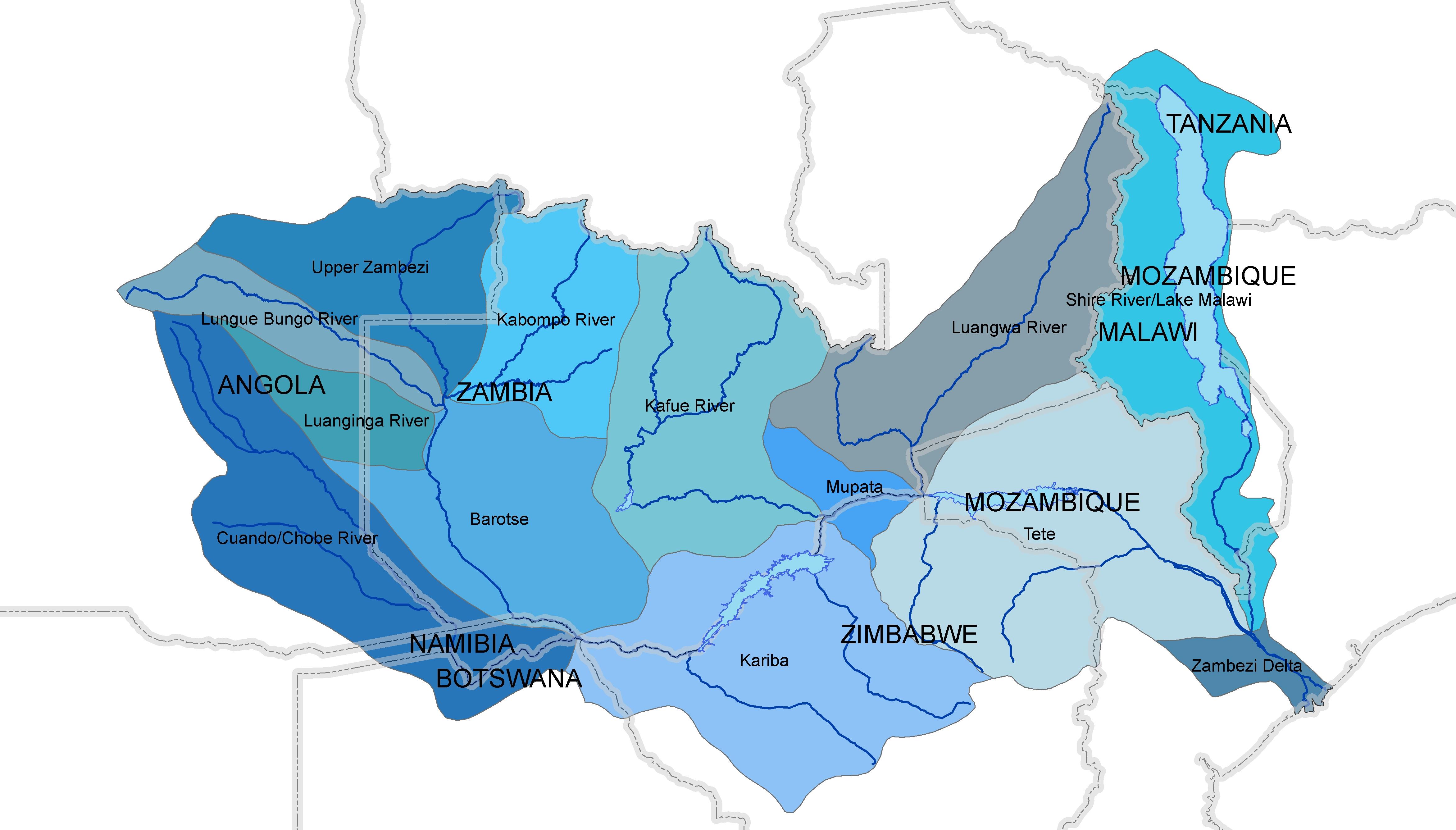The Zambezi River Basin (ZRB) is the fourth–largest African river catchment and the largest within the Southern African Development Community (SADC). It extends over an area comparable to double the size of France and, in terms of its discharge at the delta into the Indian Ocean, is similar to the Rhine or Danube rivers. It is populated by roughly 36 million people and shared by eight riparian countries including Angola, Botswana, Malawi, Mozambique, Namibia, Tanzania, Zambia and Zimbabwe.
The work addresses three research fields in the context of transboundary water resources allocation using a case study on the Zambezi River Basin (ZRB).
The first part concentrates on water use scenarios in the ZRB which are developed with the aim of identifying major impacts on the present system. The scenarios are based on strong assumptions in terms of socio–economic and demographic development as well as extreme climatic conditions. These scenarios, which explore the limits of the possible water development opportunities, are compared to a moderate scenario that is designed according to a more customary approach and projects water use based on historic de- velopment trajectories. On the basis of these scenarios, the potential impact on water availability at various specific locations, as well as at country level, is assessed.
The second part addresses the problem of fair water allocation. Assuming that coun- tries continue to consume water resources in a non–cooperative fashion, this part discusses how a fair distribution of benefits and costs might look, and enhances the assumption that externalities caused by disproportionate water use can be balanced out among the different countries by means of compensation payments. Based on three principles of fairness, namely efficiency, equitability and envy-freeness, a policy is then developed and applied to the ZRB, taking account of the same water demand scenarios developed in the first part of this thesis. It is assumed that, under certain conditions, the principles of efficiency and equitability can be satisfied. We also see envy–freeness as a result of inter- state bargaining, where it is ultimately the capability of the countries that decides the extent to which upstream countries are willing to relax their insistence on their territorial sovereignty and make concessions in favor of downstream users.
The third part looks at the influence of hydro–political and economic asymmetry on transboundary water allocation, and a formal model is developed that describes how the political power exercised by downstream countries influences the allocation of water up- stream. While existing research mainly concentrates on optimizing water allocation to the highest economic benefit, it is assumed in this part that, ultimately, water does not flow to the highest economic benefit but simply to the most powerful country. The result of such an allocation is illustrated by means of a case study on the Zambezi.
The three parts of this work rely on a hydrologic model that simulates water availability at selected locations in the ZRB based on demands by the different users. Game theoretic methods are also used here alongside the conventional methods applied to the hydrological modeling of river basins.
June 2006 – December 2010, ETH Zurich
Article from Global Environmental Change for download here: 2011 Beck Bernauer

